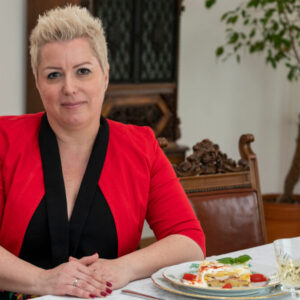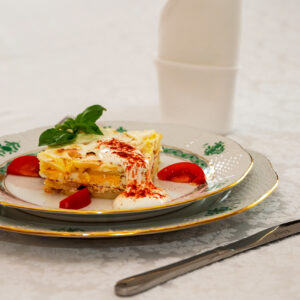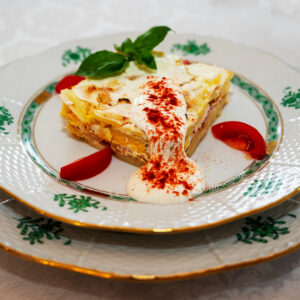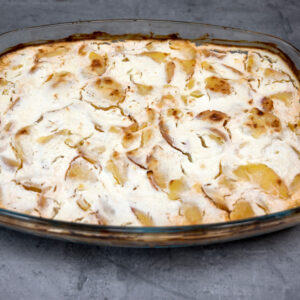The potato casserole we prepared now has Serbian kulen in it instead of Hungarian sausage. Thanks to the time spent here, some ingredients made their way into our family recipes that reflect our stay in Belgrade, most notably the ajvar.
Mrs. Éva Fisli-Barna, the wife of the Hungarian ambassador to Serbia, told us about main features of Hungarian cuisine. Also, she talked about ingredients in Serbia and living in Belgrade.
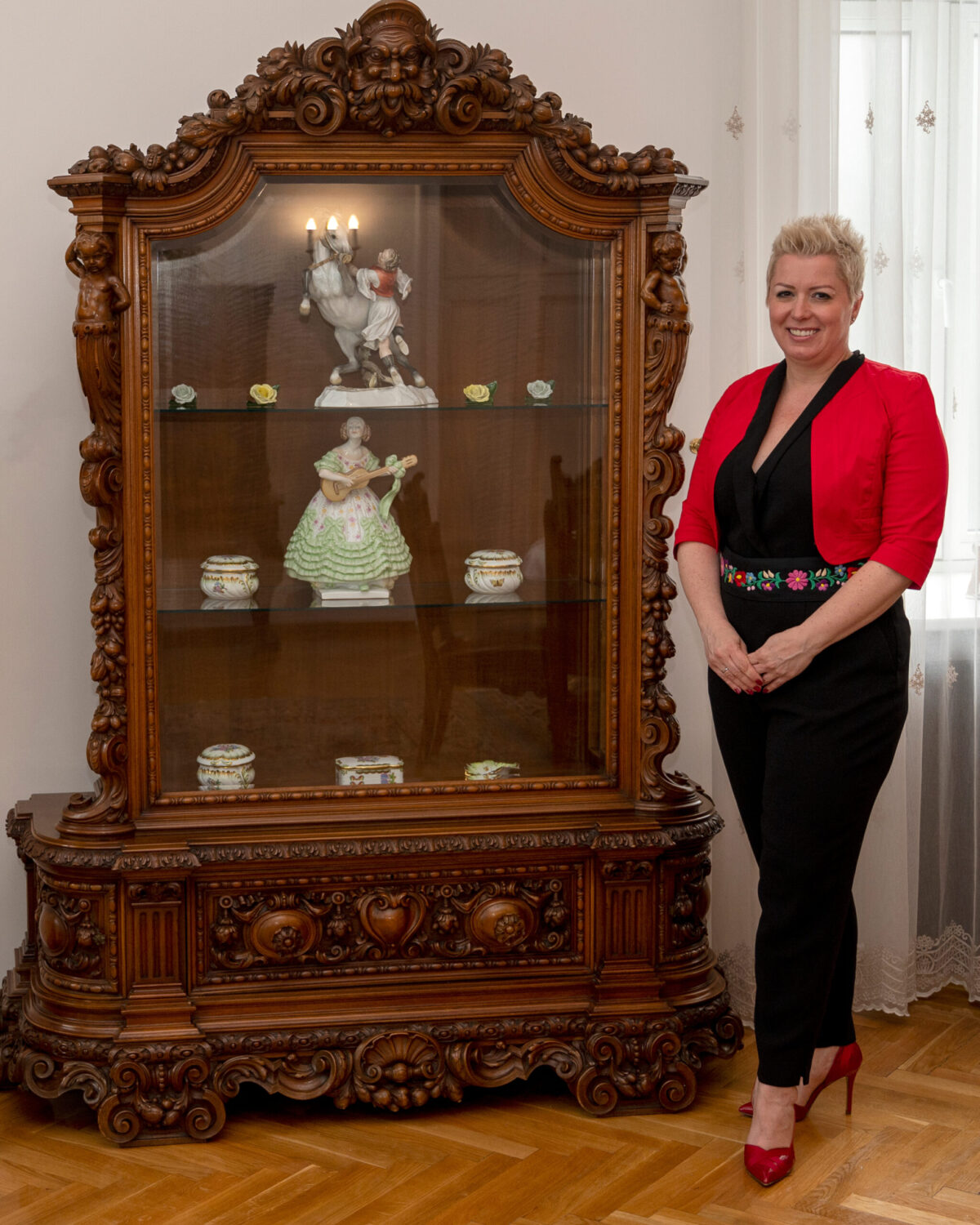
What are the main features of Hungarian cuisine?
I could easily say that the main characteristics are paprika, onion, garlic and fat. Without doubt, these ingredients can be found in most Hungarian kitchens and we use them to make our traditional dishes. Of course, nowadays we substitute the fat with vegetable oil or a vegetable fat. Concerning meat, the most common dishes are made of pork, beef or chicken. When making food, the traditional way is to roast the meat, hence the Hungarian name “pörkölt” (to “roast” a stew). The essence of this technique is to roast the chopped onion and the meat on fat, which will give a different flavour compared to simply cooking it. If you add a little Hungarian wine, you will get a more unique taste, which is a true gastronomical pleasure.
Soups have a major role in Hungarian cuisine of which many local variations exist in different regions. The Sunday lunch is the key meal of the week for the family, when a slow-cooked broth is served followed by Wiener schnitzel and mashed potatoes. A warm bean soup Jókai style is a classic for the cooler winter months, it has a thick texture and is usually served with smoked meat. Around the mountains of Bakony, the proximity of the forest offers itself to create a ragout soup with mushroom and game meat, most commonly seasoned with tarragon. The summer period is all about a fresh and cold bowl of fruit soup or the star of every summer get together outdoors: the goulash. A true Hungarian goulash is a lot juicier than the one served in Serbia, it is more like a soup than a stew, always slow cooked from quality beef. There is also a great tradition of oven cooked meals in Hungary, most notable our version of potato casserole, which resembles to moussaka.
Traditional dinner at Skadarlija with tamburica music is a perfect start for a weekend adventure. The Kalamegdan, Saint Sava’s Church and the beautifully renovated National Museum are all must-sees!
When it comes to fish, the traditional fish soup is a staple, but breaded carp is also on the menu, not to mention smoked trout from Lilafüred, which is now having a comeback. Although Hungarians don’t eat as much salad as people in the Balkans do, we make many types of different pickles from cucumber, cauliflower, beetroot, cabbage or even a watermelon.
With regards to desserts, the well-known Dobos cake comes first, but you have to try the pancake Gundel style á la flambé, or the Somlói sponge cake for that matter. Dessert can be substituted by a glass of sweet Tokaj wine, of which Louis XIV, the king of France said the following “the wine of kings, the king of wines”.
What do you miss the most about from your country? Can you find all the necessary ingredients for the preparation of traditional Hungarian dishes in Serbia?
So far, it did not pose a problem to find the right ingredient in Serbia. I think that if you spend time in a country, you need to adapt to the local conditions, which also includes dietary habits. The potato casserole we prepared now has Serbian kulen in it instead of Hungarian sausage. Thanks to the time spent here, some ingredients made their way into our family recipes that reflect our stay in Belgrade, most notably the ajvar.
Do you like Serbian cuisine and what is your favourite Serbian dish?
I adore Serbian cuisine and Serbian culinary habits. No rush, take it slow, talk to friends for hours. This is something I can identify with. If you don’t pay attention, you get full just by having a starter. I really like mučkalica, which resembles to our lecsó, but I also love grilled meat like čevap. The teletina ispod sača served with pekarski krompir is simply amazing and I think I could go on for long…
What do you think of life in Belgrade? Did you manage to visit some other places in Serbia and what would you recommend to your friends to see here?
I love living in Belgrade and the mentality of Serbian people is really close to me. In restaurants, the waiter always asks whether I liked the food or not, and he or she really means it! If you visit a place more than once, you will be greeted as a friend, so I get called komšija at the bakery or the greengrocers. Our friends and family members visit us quite often and they leave with happy memories. We already have a “weekend package” like a travel agent, so that we can show the best things the city has to offer. Traditional dinner at Skadarlija with tamburica music is a perfect start for a weekend adventure. The Kalamegdan, Saint Sava’s Church and the beautifully renovated National Museum are all must-sees! We can have a coffee in Hotel Moscow to take a short break, which is also famous for its Hungarian Zsolnay ceramic décor. Belgrade’s rapidly developing new area is the Belgrade Waterfront, which already has a special atmosphere and we cannot miss the special mood on the splav restaurants, which I and my guests always can’t get enough of. We’ve been to many places in Serbia but there are a lot more to see and do! Right now, we are planning to go to Zlatibor and its surroundings!
